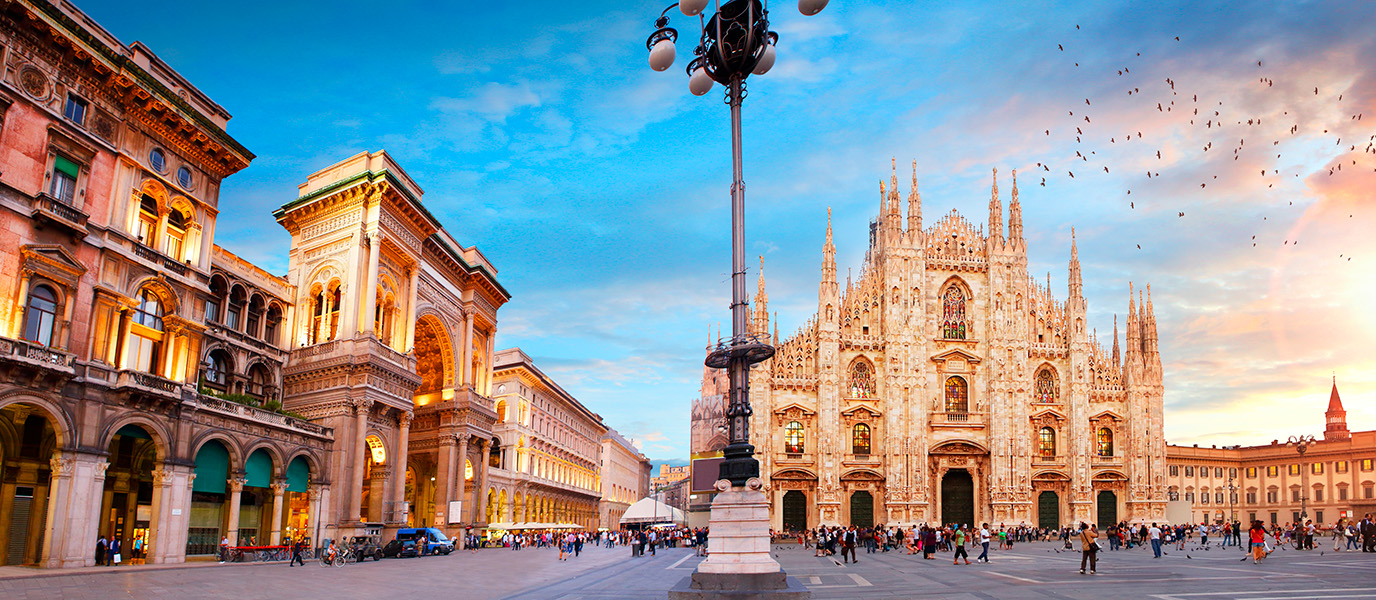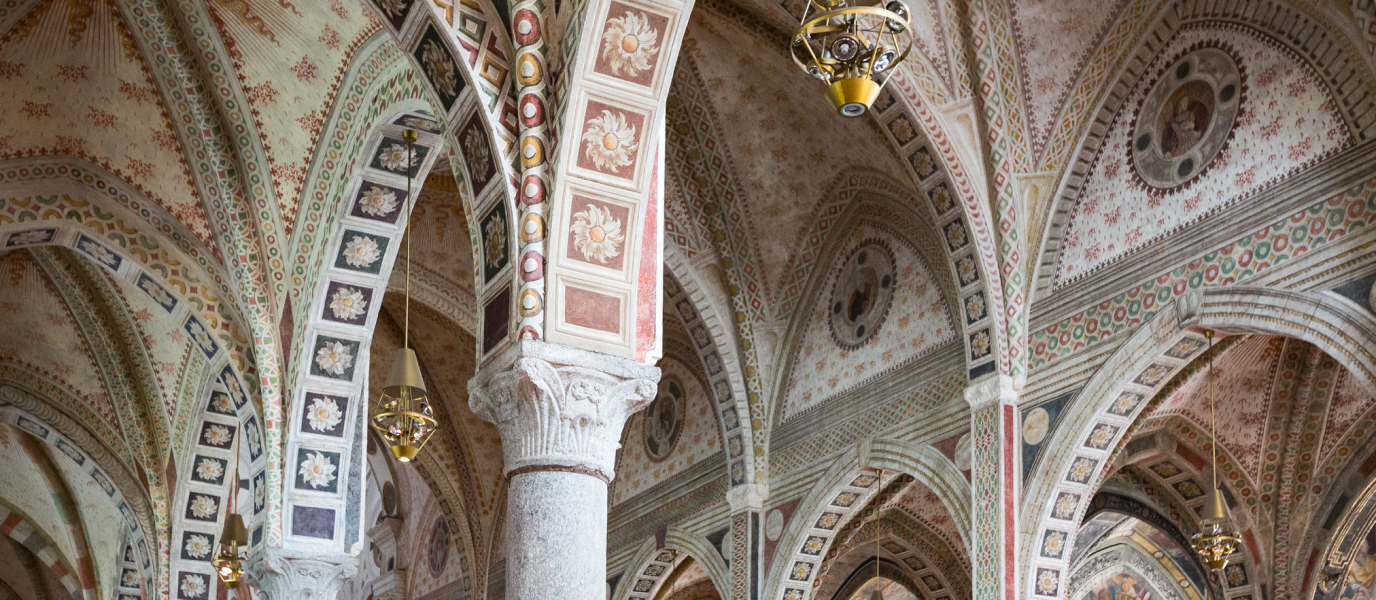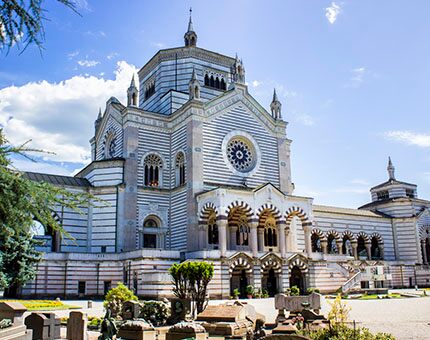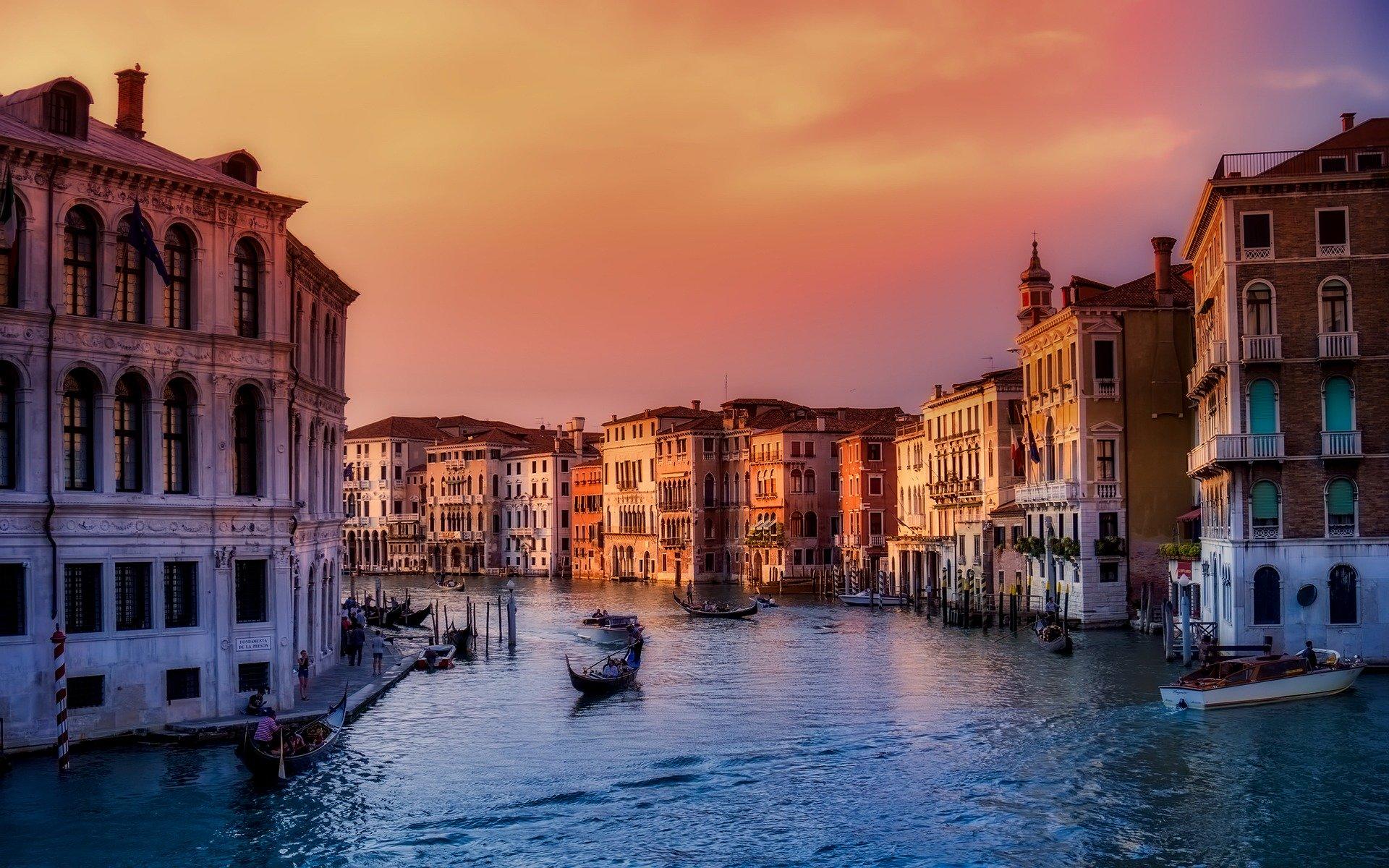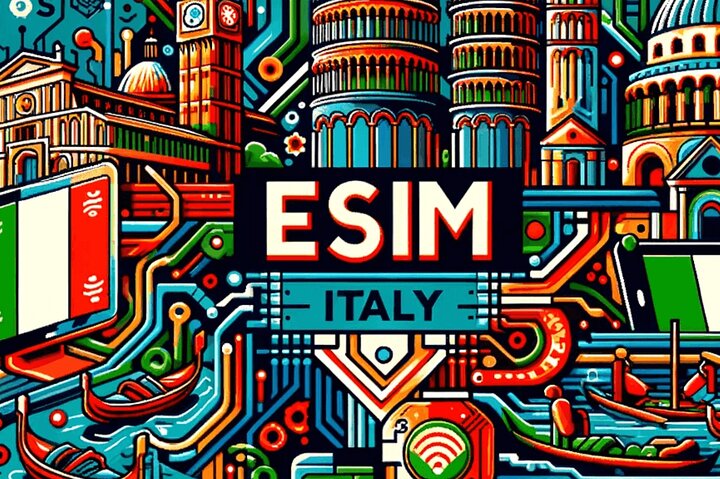There’s no doubt that one of the icons of Milan is the Castello Sforzesco. A leisurely stroll from Piazza del Duomo through Vias Orefici and Dante leads to this sturdy castle that has over 600 years of history. The most important families of Lombardy have passed through this fortress and it has become a magnificent symbol of the once all-powerful Duchy of Milan.
Like a phoenix, the fortress has been completely destroyed and has risen again, with world-renowned artists such as Leonardo da Vinci leaving their mark. Today, the complex is home to no less than six important museums with genuine artistic gems.
But the Sforzesco Castello, or Sforza’s Castle, of Milan is much more than this. Let’s take a look at its history, its architecture, and all the secrets of this imposing complex, which until now has been “impregnable”.
History of the Castello Sforzesco, the castle of Milan
The castle began to be built as a fortress from 1358 by order of Galeazzo II Visconti, lord of Milan. Work on the fortification lasted ten years. However, the fall of the Visconti family in Milan and the beginning of the so-called Ambrosian Republic led to the total destruction of the original fortress in 1447. As a tribute to this first dynasty that built the first fortress, the mythical coat of arms of the Visconti family can be seen on the imposing tower that serves as the entrance to the castle. On it you can see a huge snake, known as a “biscione”, swallowing a human being.
Just three years after its destruction, the condottiero Francesco Sforza, founder of the all-powerful Sforza dynasty that ruled Milan throughout the Renaissance, ordered a new castle to be built. His son Ludovico Sforza, who has gone down in history as a patron of great Italian Renaissance artists, added many decorative elements inside and effectively transformed it into a magnificent residence, turning it into a ducal palace. Leonardo da Vinci and Bramante painted frescoes on its walls. In fact, da Vinci designed the castle’s own defences.
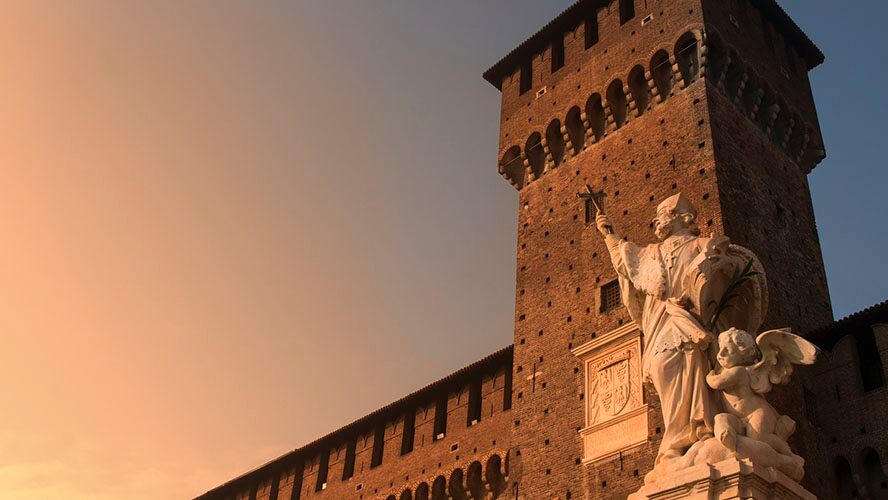
Centuries later, in the early 19th century, during his campaign in northern Italy, Napoleon Bonaparte had the moat dried up and the drawbridges removed, using what remained of the ducal palace as barracks for his soldiers.
In 1884, the city of Milan considered demolishing the half-destroyed castle once again, but the decision was taken to transform it into a museum. The architect Luca Beltrami was commissioned to restore it.
The architecture of the Sforza castle in Milan
This imposing red-brick castle with a clearly medieval design and an enormous square structure. Each side of the fortress measures 200 metres and each of its corners is topped by beautiful towers. The two towers on the main façade are sturdy circular towers whose purpose was to reinforce the walls.
The magnificent square keep at the centre of this façade, which serves as a monumental entrance to the castle, was commissioned by Francesco Sforza to the architect Filarete in 1452. The intention of the lord of Milan, in erecting the beautiful Filarete tower, was to improve the appearance of a “pure and simple” fortress and to give it the appearance of an elegant residence. More than half of the complex houses the impressive Piazza d’Armas behind the entrance of the Filarete tower.
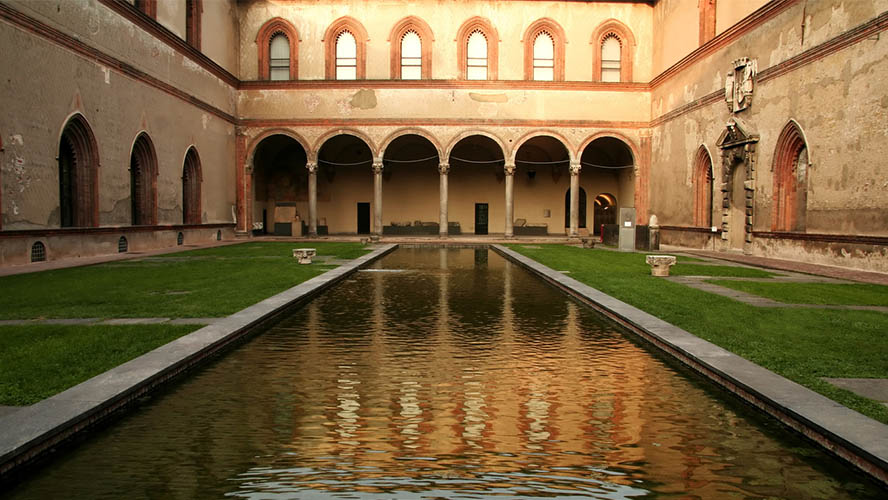
Years later, Galeazzo Maria Sforza ordered that the inner courtyards of the Sforza residence, the Rochetta and the Ducal Courtyard, be decorated. Renaissance arcaded galleries were erected, topped with slender semicircular arches and decorated ribbed vaults.
Later on, the ducal rooms were also finely decorated with beautiful vaults and unique frescoes painted by artists such as Leonardo.
The museums of the Castello Sforzesco
The rooms of what was once the Ducal Palace house a number of very interesting museums that retrace the cultural and social life of Milan and the Lombardy region.
Civite Raccolta d’Arte Antica: the Museum of Ancient Art
This is a magnificent collection of sculptures and paintings spanning no less than twelve centuries of history; from a sarcophagus from the 4th century BC to the “Rondanini Pietà”, Michelangelo’s unfinished masterpiece and the jewel in the museum’s crown.
Also noteworthy are the early Christian frescoes on display, as well as the splendid equestrian tomb of Bernabé Visconti, one of the first lords of Milan. Also outstanding are the reliefs that narrate the decisive victory of the Lombard League over Emperor Barbarossa in the 12th century, which gave rise to the first lordship of Milan.
The rooms of this museum are themselves a work of art, as they were decorated by Leonardo da Vinci. You can even see historic coats of arms, as well as the royal standard of King Philip II of Spain, who assumed the title of Duke of Milan in the mid-16th century.
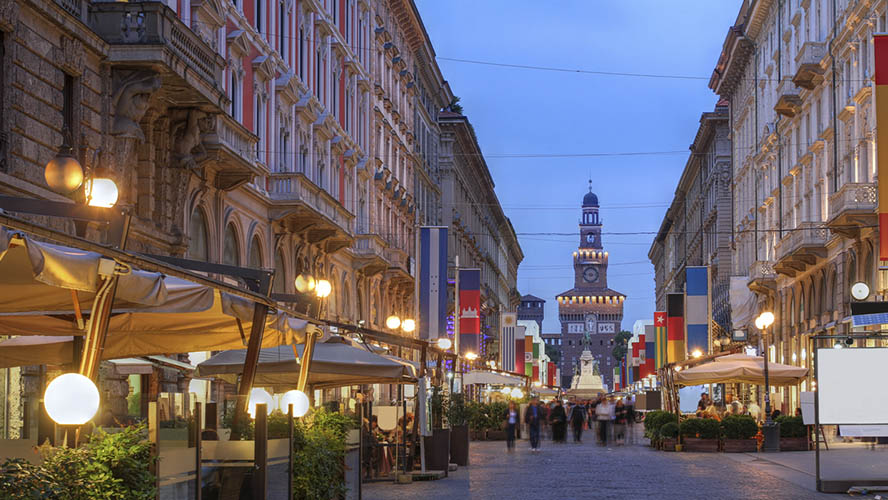
Pinacoteca of Sforza’s Castle
On the upper floor, above the rooms of the Museum of Ancient Art, is this picture gallery, an art gallery dedicated to paintings from the 12th to the 18th centuries. It houses over 1,500 paintings from the Golden Age of Italian painting with works by artists such as Mantegna, Giovanni Bellini, Antonello da Menssina, Filippo Lippi, Canaletto, Tintoretto, and Tiepolo, among others.
The most outstanding works are Mantegna’s “Trivulzio Madonna”, Bramantino’s “Noli me tangere”, and Vincenzo Foppa’s “San Sebastiano”.
Museum of Furniture
Adjacent to the picture gallery is the Museum of Furniture, which has domestic objects and furniture dating from the 15th century onwards.
Archaeological Museum
In the palace’s basements, you can see the museum’s interesting archaeological artefacts, basements which house a comprehensive collection of Ancient Egyptian artefacts. The highlight, however, is the section devoted to prehistory in the Lombardy region.
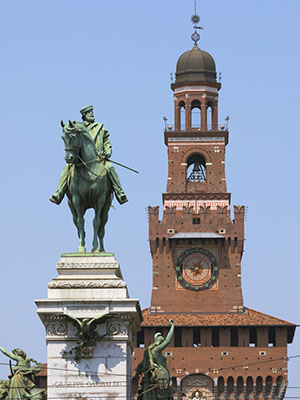
Museum of Decorative Arts
There’s also space in this castle for several rooms dedicated to the Decorative Arts. The collection displays handcrafted ceramics, textiles, and tapestries from the 11th to the 18th centuries. The exceptional Trivulzio tapestries, designed by Bramantino, are among the most outstanding not only in the exhibition, but also in the entire castle.
Museum of Musical Instruments
This collection offers a large number of instruments from all over the world and from all periods. Every music lover or music enthusiast can see at first hand how their favourite musical instruments have evolved over the centuries.
What to choose if you’re in a hurry
Both the size of the castle and the cultural offer of its rooms can make it overwhelming to try to visit all that the Castello Sforzesco has to offer. If you’re short on time, it may be best to walk around the exterior and inner courtyards of the castle and enjoy the beautiful views from here of the Duomo in the distance.
The magnificent Parco Sempione, situated behind the fortress, shouldn’t be missed. This huge English-style park is perfect for a pleasant picnic, weather permitting. Once inside the castle, the must-see collection if you’re in a hurry is the Museum of Ancient Art, which, after all, allows you to see the best treasures of the cultural site and tour the ducal rooms decorated with frescoes.
Useful information:
Official website: Castello Sforzesco. (link to https://milanocastello.it/)
How to get there
- By metro. The M1 (red) and M2 (green) metro lines have stops at the Cardona FN and Cairoli Castello stations, which are the closest to the Castello Sforzesco.
- By tram. Lines 1, 2, 4, 12, 14, and 27.
- By bus. Lines 50, 57, 58, 61, and 94.
Visit the Castello
- Opening times: You can visit the Castello Sforzesco from 7 a.m. to 7.30 p.m., every day of the year. The museums are open from 9 a.m. to 5.30 p.m., Tuesday to Sunday.
- Admission fee. Check updated prices and discounts on the official website. Admission is free on the first and third Tuesdays of the month from 2 p.m.








































































